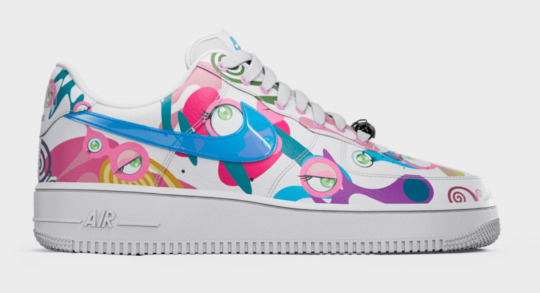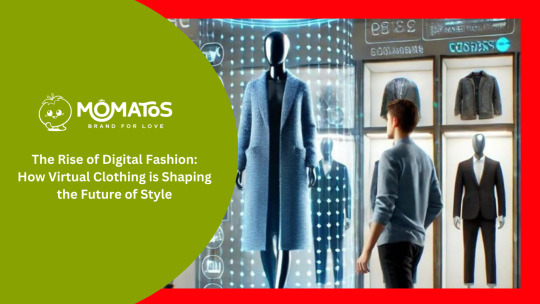#RTFKT
Explore tagged Tumblr posts
Photo

#new#shoe#sneaker#nike sneaker#sneaker photography#sneakerhead#silouette#raptor#footwear#rtfkt#nike#nike dunk genesis#ghost#void
25 notes
·
View notes
Text

COUNTDOWN: RTFKT x NIKE Dunk Genesis 'VOID Edition' Release Date: 2024-06-21
#shoegame#sneakerporn#hype#hypebeast#sneakerhead#hypebeastsneakers#hypesneakers#hypesneaker#sneakernews#sneakerwatch#sneakercollector#sneakergame#sneakerheat#sneakercollection#sneakercommunity#nikecommunity#nikedunkcommunity#rtfktcommunity#nikeswoosh#swoosh#nikedunklow#nikedunks#nikedunk#dunklow#dunks#dunk#nike#rtfkt#nikexrtfkt#rtfktxnike
6 notes
·
View notes
Text
RTFKT x Nike Dunk Genesis Neko Camo
3 notes
·
View notes
Text
RTFKT And Nike Launch ‘Cryptokicks IRL’ Sneaker Collection

In a groundbreaking collaboration between RTFKT Studio and Nike, the innovative concept of Cryptokicks has emerged, fusing the digital realm with tangible reality. Cryptokicks are unique, customizable digital sneakers residing on the Ethereum blockchain, each available for purchase as a Non-Fungible Token (NFT). Now, taking a bold step, RTFKT Studio is introducing the first-ever collection of physical Cryptokicks, bridging the gap between the virtual and physical worlds.
According to information on RTFKT’s official website, these real-world Cryptokicks boast remarkable features. One standout characteristic is their lacing system, automatically adjusting to a comfortable, pre-programmed fit as the wearer begins walking. Additionally, the shoes are equipped with a rechargeable battery, offering the wearer the ability to choose different colors and animations that illuminate with each step. The package includes a wireless Power Deck connecting to the Cryptokicks iRL app via Bluetooth. To ensure authenticity, each pair incorporates RTFKT’s cutting-edge WM (World Merging) NFC chip, allowing users to authenticate the physical copy with its digital counterpart.
The collaborative release by RTFKT and Nike comprises four distinct colorways: Blackout, Ice, Stone, and Space Matter. Limited to just 19,000 pieces, the breakdown of colorways will be determined by the choices of collectors. These sneakers will be sold as digital collectibles (NFTs) redeemable for their physical counterparts, a process referred to by RTFKT as “forging.”
Lace Engine NFT holders will gain exclusive access to purchase Cryptokicks iRL sneakers from December 12 to 16. For those without NFT ownership, a raffle on the RTFKT website will be open from December 7 to 9, with an opportunity to purchase remaining pairs on December 14, unless the initial stock is completely sold out. The final prices, denominated in ETH, will be adjusted to the ETH/USD value on the day of minting. This groundbreaking release marks a significant intersection of technology, fashion, and collectibles, pushing the boundaries of what is possible in both the digital and physical realms.
Checkout Our Web3 Wallet Tracker at www.anzali.io
Follow Us : Twitter | Instagram | Telegram
1 note
·
View note
Video
youtube
RTFKT x NIKE DUNK GENESIS "OG" | REVIEW, SIZING, & ON-FOOT
0 notes
Text


Takashi Murakami x RTFKT x Nike Air Force 1
#takashi murakami#murakami#pop art#nike#air force 1#af1#fashion#style#hypebeast#complex#highsnobiety#aesthetic#sneakers#shoes#sneakerhead
74 notes
·
View notes
Text




RTFKT x Nike Dunk Genesis VOID Edition HM4465-001
24 notes
·
View notes
Photo

RTFKT x Nike Dunk Genesis “Void” Releases June 2024
2 notes
·
View notes
Text

RTFKT x NIKE Dunk Genesis 'Void' Release Date: June 21, 2024
#shoegame#sneakerporn#hype#hypebeast#sneakerhead#hypebeastsneakers#hypesneakers#hypesneaker#sneakernews#sneakerwatch#sneakercollector#sneakergame#sneakerheat#sneakercollection#sneakercommunity#nikecommunity#nikedunkcommunity#rtfktcommunity#nikeswoosh#swoosh#nikedunklow#nikedunks#nikedunk#dunklow#dunks#dunk#nike#rtfkt#nikexrtfkt#rtfktxnike
5 notes
·
View notes
Text
The Rise of Digital Fashion: How Virtual Clothing is Shaping the Future of Style
The fashion industry is undergoing a revolutionary transformation, shifting from physical garments to digital fashion and virtual clothing. With the rise of the Metaverse, NFTs, and AI-powered designs, fashion is no longer confined to the real world. Brands and designers are embracing technology to create wearable digital outfits, redefining the way people express themselves online.

What is Digital Fashion?
Digital fashion refers to computer-generated clothing designed for virtual environments, social media, gaming, and the Metaverse. Unlike traditional clothing, digital outfits exist only in the digital realm, meaning they can be bought, sold, and worn without physical production.
Key Elements of Digital Fashion:
3D-Rendered Clothing: Designed using advanced software like CLO3D and Blender.
NFT Fashion: Unique digital outfits stored on the blockchain.
Augmented Reality (AR) Wearables: Virtual outfits applied through filters on Instagram, Snapchat, and TikTok.
Metaverse Fashion: Clothing for avatars in virtual worlds like Decentraland and Roblox.
Why is Digital Fashion Trending?
The shift toward digital fashion is driven by sustainability, innovation, and digital identity. Here’s why it’s gaining traction:
1. Sustainability & Waste Reduction 🌱
Fast fashion is one of the biggest polluters in the world. Digital clothing eliminates the need for physical production, reducing waste, water consumption, and carbon emissions.
2. The Rise of the Metaverse 🌐
As more people engage with virtual worlds, the demand for digital self-expression is booming. Big brands like Gucci, Balenciaga, and Nike are launching virtual collections to cater to this new audience.
3. Social Media & Influencer Culture 📱
With platforms like Instagram, TikTok, and Snapchat, influencers and creators are showcasing digital outfits to reduce the environmental impact of "wear-once" fashion trends.
4. NFTs & Blockchain in Fashion 💎
Fashion NFTs are changing how people buy and own clothing. With blockchain technology, digital fashion items can be unique, collectible, and even resold.
How to Buy & Wear Virtual Clothing
If you’re interested in experiencing digital fashion, here’s how you can get started:
Explore Digital Fashion Marketplaces: Websites like DressX, The Fabricant, and RTFKT offer high-quality virtual outfits.
Try AR Clothing Filters: Use Snapchat and Instagram to try on digital wearables.
Invest in Fashion NFTs: Platforms like OpenSea and Decentraland let you buy and sell NFT clothing.
Customize Your Avatar: In games like Roblox, Fortnite, and The Sandbox, you can purchase exclusive digital outfits.
The Future of Digital Fashion 🚀
Digital fashion is not just a trend—it’s the future. With advancements in AI, VR, and blockchain, we can expect:
More personalized virtual fashion experiences through AI styling.
Integration of physical and digital (phygital) clothing, where outfits exist both online and offline.
Fashion becoming more inclusive, allowing limitless creativity without size, material, or production constraints.
Final Thoughts
The rise of digital fashion is changing the way we define style. Whether you’re a fashion enthusiast, influencer, or gamer, virtual clothing is opening up new opportunities for creativity, sustainability, and self-expression.
#momatos.in
#Digital fashion#Virtual clothing Fashion#NFTs Metaverse fashion#Augmented reality wearables#Sustainable fashion#Digital fashion brands#Future of fashion
0 notes
Text

Inspired by CloneX x Takashi Murakami 20K NFT project
0 notes
Text
Web3 & Marketing: The Future of Blockchain, NFTs & Decentralized Ads
In the rapidly evolving world of digital marketing, staying ahead of the curve is paramount. As Web3 continues to reshape the internet, it’s essential for businesses to understand how these technologies—like blockchain, NFTs, and decentralized ads—are influencing the advertising landscape. For brands looking to tap into these changes, partnering with the Top 10 digital marketing agencies in Mumbai can provide the expertise needed to navigate this complex terrain.
Understanding the Impact of Web3 on Advertising
Web3, the next iteration of the internet, is built on decentralized technologies such as blockchain. Unlike Web2, where data and content are controlled by central entities like Google, Facebook, and Amazon, Web3 allows users to have control over their data, identity, and content. This decentralization is leading to a profound shift in how brands approach advertising.
With Web3, digital ads are no longer restricted to traditional platforms. Instead, blockchain allows for transparent and verifiable ad transactions, ensuring advertisers only pay for genuine engagement. The use of decentralized platforms eliminates the need for middlemen, ensuring fairer pricing and improving ad targeting.
Moreover, the ability to own and tokenize content on the blockchain means that creators and brands can directly monetize their work, bypassing traditional ad networks. As brands adapt to this new landscape, agencies specializing in digital marketing in Mumbai can guide businesses in creating innovative Web3 campaigns that leverage blockchain’s transparency and trust.
Brands Successfully Using NFTs and Blockchain for Marketing
Non-Fungible Tokens (NFTs) have been a major talking point in the marketing world over the past few years. Many brands, particularly in fashion, gaming, and entertainment, are using NFTs as part of their marketing strategy to increase customer engagement and create new revenue streams.
For example, Adidas partnered with Bored Ape Yacht Club to release an exclusive collection of NFTs, which helped drive significant buzz around the brand. Similarly, Nike acquired an NFT platform, RTFKT, to create limited-edition virtual sneakers for its customers. These collaborations not only drive brand awareness but also enable direct consumer engagement.
Blockchain technology also allows for transparent supply chains and authenticity verification, which is crucial in industries like luxury goods and collectibles. By embedding these features in their digital marketing campaigns, brands can offer customers a sense of trust and assurance.
As a business in Mumbai, partnering with one of the Top 10 digital marketing agencies in Mumbai can help integrate blockchain-based loyalty programs, NFT giveaways, and virtual merchandise into your brand’s marketing strategy.
How to Prepare for Decentralized Search Engines and Social Media
In the near future, Web3 will bring about changes to traditional search engines and social media platforms. Decentralized search engines will shift control away from corporate giants like Google, giving power back to the users. Brands will need to understand how to optimize for these new platforms, which operate on blockchain rather than traditional algorithms.
Similarly, social media platforms are evolving toward decentralization. Platforms like Mastodon are already gaining popularity, offering a decentralized alternative to Twitter. As more users flock to these platforms, brands will need to craft a presence that aligns with the principles of Web3: privacy, transparency, and user control.
For businesses in Mumbai, the Top 10 digital marketing agencies in Mumbai can help future-proof your strategy by adapting SEO techniques for decentralized search engines and creating content that resonates with users on decentralized social platforms.
Why Mumbai’s Digital Marketing Agencies Are Key to Your Web3 Success
As the Web3 revolution continues to unfold, businesses need an experienced digital marketing partner who understands both the technical intricacies and marketing implications of this new internet era. By working with the Top 10 digital marketing agencies in Mumbai, your brand can stay at the forefront of these innovations.
Mumbai’s agencies are well-positioned to help brands integrate blockchain-based loyalty programs, NFT-driven marketing campaigns, and decentralized ad strategies into their overall marketing strategy. They also provide expertise in content creation for Web3 platforms and SEO optimization for decentralized search engines, ensuring your brand remains competitive in the rapidly changing digital landscape.
Conclusion
Web3 is transforming the future of digital marketing, offering businesses new ways to engage with customers through blockchain, NFTs, and decentralized platforms. As brands explore these emerging technologies, partnering with the Top 10 digital marketing agencies in Mumbai will be crucial in navigating the complexities of Web3 advertising.
By embracing the changes brought on by Web3, your brand can take advantage of direct consumer relationships, increased transparency, and enhanced engagement opportunities, driving your marketing strategy to new heights.
0 notes
Text
How two female entrepreneurs from Ukraine are reshaping the fashion industry

Editor’s note: This article is part of a series of profiles highlighting successful Ukrainian startups and businesses. The series is funded by the regional investment fund Ukraine-Moldova American Enterprise Fund (UMAEF) and created in partnership with Spend With Ukraine, a non-profit organization that launched a platform to showcase businesses with Ukrainian roots and provide one more meaningful way to support Ukraine – by choosing to spend with Ukraine. The series’ sponsors are not involved in the editorial process of the writing of these profiles.
For Daria Shapovalova, co-founder of the digital fashion platform DressX, fashion isn’t just about fabric and buttons anymore — it’s about pixels and animations.
Founded in Los Angeles in 2020 by Ukrainian entrepreneurs Shapovalova and Natalia Modanova, DressX is part of a larger transformation of how the world experiences fashion, taking the industry into the realm of avatars and the Metaverse.
The platform uses artificial intelligence and augmented reality to create virtual clothing, allowing its users to “try them on” virtually and purchase the items for their virtual wardrobe.
The digital fashion industry is among the fastest-growing sectors, projected to hit $2.4 billion in value in 2024, with exponential growth driven by the increasing influence of gaming, virtual reality (VR) and augmented reality (AR), and the Metaverse in daily life.
DressX’s creators say their company distinguishes itself from the major players like the Fabricant and RTFKT, which was recently acquired by Nike, by focusing primarily on avatar fashion stores, and catering both to individual users and businesses.
Avatar fashion allows its creators to design and customize virtual clothing and accessories that can be worn by their digital avatars on social media and gaming platforms like Snapchat, Meta, Roblox, and Zepeto.



An example of DressX’s “metacloset” virtual wardrobe concept, popular among digital natives, features augmented reality looks, on-chain fashion collectibles, and avatar fashion for virtual worlds. (DressX)
With most of its users based in the U.S., DressX appeals to Gen Z and Millennials who are naturally drawn to virtual spaces.
“The first time (the young generation) see Adidas, it’s on Roblox. The first time they see Louis Vuitton, it’s on Fortnite,” says Shapovalova in an interview with the Kyiv Independent. “So brands should adjust, and we’re here to help — we’re here to build the biggest brands in online environments.”
“The first time (the young generation) see Adidas, it’s on Roblox. The first time they see Louis Vuitton, it’s on Fortnite.”
As of 2024, DressX has distributed over 60 million digital assets, or digital garments, across various platforms.
DressX’s collaboration with Meta in 2022 in marked a significant milestone, expanding its reach by bringing innovative 3D designs to platforms like Instagram, Facebook, and Messenger, all of which are owned by Meta.
DressX has also collaborated with well-established brands, bringing Lacoste’s iconic styles to platforms like Roblox and Zepeto, and Diesel’s trendy designs to the Meta avatar store.
In another collaboration, Hugo Boss implemented DressX Mirror, an interactive display that allows users to try on AR outfits during its events.

Lacoste Bitmoji by DressX. (DressX)
The journey of DressX founders, Shapovalova and Modonova, began in Ukraine. The two were part of organizing the Mercedes-Benz Kyiv Fashion Days and Shapovalova hosted a fashion TV show.
Their transition into tech was a deliberate move that started in 2017 when Shapovalova relocated to San Francisco to pursue a business degree, driven by the idea that fashion is more than just clothing.
“I understood that the fashion industry is actually more than just a beautiful picture, but also a business,” Shapovalova recalls. “That was exactly the nature of the show (I hosted) — to show that this industry is beautiful, but there is a business aspect.”
As women and immigrants in a male-dominated tech world, Shapovalova and Modonova are in the minority. Shapovalova recalls attending business conferences where women made up only a small fraction of the room.
“When you go to a venture event in San Francisco, only about 1% of the audience is female,” she says. “It makes you feel a little different, but it’s not like people don’t notice you’re there.”
Modonova adds: "We are benchmarking ourselves against everyone else. At the end of the day, it’s about the business that you built — you are judged by what you’ve done, not by whether you’re a man or woman.'"
Although digital fashion offers a sustainable alternative to traditional clothing, Shapovalova and Modonova emphasize that their mission is not to compete with fast fashion but to create something entirely new.


DressX’s "metacloset" includes augmented reality styles and avatar fashion for virtual worlds. (DressX)
“We’re not here to fight the mass market,” Modonova explains. “We’re here to create new categories and opportunities for people to experience fashion in ways they couldn’t before.”
But the environmental impact is undeniable. "We have a couple of patents and a methodology for calculating how many resources are spent on producing one virtual item versus a physical one," the co-founders say.
As far as new opportunities to experience fashion go, DressX has developed various tools and solutions since its inception.
Through its DressX App, users can try on virtual outfits using augmented reality, while the AI-driven DressXCode fashion game allows them to create themed outfits for virtual environments.
The DressX Mirror, an AR-powered interactive screen, brings a futuristic twist to retail stores, enabling patrons to virtually try on clothes.
Additionally, DressX offers exclusive NFTs, allowing users to own unique digital designs for platforms like Roblox and Zepeto. Their latest venture, an AI-driven fashion game, merges entertainment with style.
DressX’s creators say they want to continue scaling their company and leading the fashion revolution.
'We will definitely contribute to change in the industry,' Shapovalova says. 'Will we be the only company to change it? No, we’re part of a much bigger shift in the industry.'"
DressX is reshaping fashion in the digital age, combining sustainability with innovation to show that style can thrive without harming the planet. Discover more businesses making eco-conscious and forward-thinking the new black at Spend With Ukraine — your support fuels creativity, sustainability, and resilience.
5 high-end Ukrainian fashion brands you should know
Editor’s note: This article is part of a series of profiles highlighting successful Ukrainian startups and businesses. The series is funded by the regional investment fund Ukraine-Moldova American Enterprise Fund (UMAEF) and created in partnership with Spend With Ukraine, a non-profit organization t…

The Kyiv IndependentDominic Culverwell

0 notes
Video
youtube
RTFKT DUNK LABS (ComplexCon 2023)
1 note
·
View note
